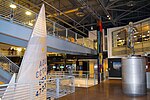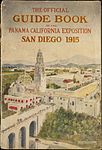House of Pacific Relations International Cottages

The House of Pacific Relations International Cottages is a complex of cottages in San Diego's Balboa Park, in the U.S. state of California. Built for the 1935 California Pacific International Exposition, they currently house 33 groups that "promote multicultural goodwill and understanding through educational and cultural programs". Groups that do not have their own cottage meet in the nearby Hall of Nations. The United Nations Association of San Diego operates separately out of the neighboring United Nations Building.In 2021, the House of Pacific Relations International Cottages expanded, adding new cottages for Mexico, Panama, Colombia, Peru, India, Korea, Palestine, Turkey, and the Chamorros (indigenous people of the Mariana Islands).
Excerpt from the Wikipedia article House of Pacific Relations International Cottages (License: CC BY-SA 3.0, Authors, Images).House of Pacific Relations International Cottages
Pan American Place, San Diego Banker's Hill
Geographical coordinates (GPS) Address Nearby Places Show on map
Geographical coordinates (GPS)
| Latitude | Longitude |
|---|---|
| N 32.729 ° | E -117.152 ° |
Address
House of Czech and Slovak
Pan American Place
92134 San Diego, Banker's Hill
California, United States
Open on Google Maps









